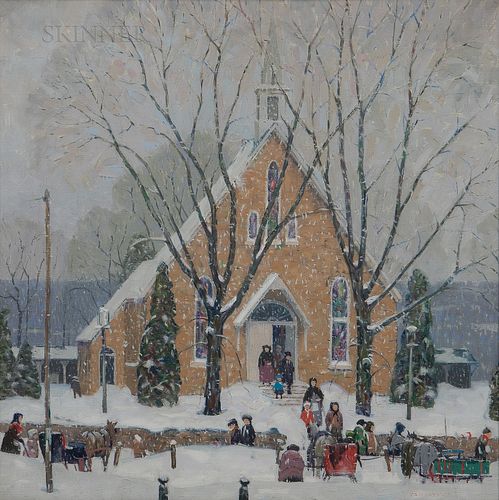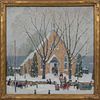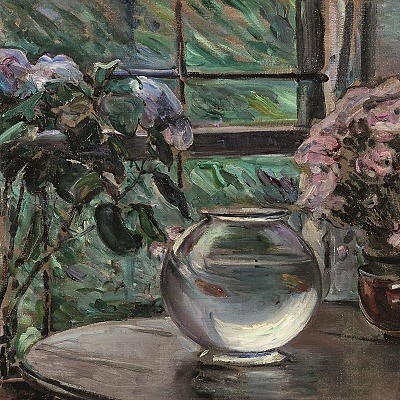Carl E. Lawless (American, 1894-1964) After Service
Lot 63
About Seller
Bonhams Skinner
274 Cedar Hill Street
Marlborough, MA 01752
United States
Founded over four decades ago, Bonhams Skinner offers more than 60 auctions annually. Bonhams Skinner auctions reach an international audience and showcase the unique, rare, and beautiful in dozens of categories, including the fine and decorative arts, jewelry, modern design, musical instruments, sc...Read more
Categories
Estimate:
$8,000 - $12,000
Absentee vs Live bid
Two ways to bid:
- Leave a max absentee bid and the platform will bid on your behalf up to your maximum bid during the live auction.
- Bid live during the auction and your bids will be submitted real-time to the auctioneer.
Bid Increments
| Price | Bid Increment |
|---|---|
| $0 | $10 |
| $100 | $25 |
| $500 | $50 |
| $1,000 | $100 |
| $3,000 | $250 |
| $5,000 | $500 |
| $10,000 | $1,000 |
| $30,000 | $2,500 |
| $50,000 | $5,000 |
| $100,000 | $10,000 |
| $300,000 | $25,000 |
| $500,000 | $50,000 |
| $1,000,000 | $100,000 |
About Auction
By Bonhams Skinner
Sep 30, 2021
Set Reminder
2021-09-30 10:00:00
2021-09-30 10:00:00
America/New_York
Bidsquare
Bidsquare : American Works of Art
https://www.bidsquare.com/auctions/skinner/american-works-of-art-7485
Early 19th century painters through early Modernists are represented, including works by Arthur Dove, Percival Rosseau, Granville Redmond, Elizabeth Nourse, Marguerite Zorach, and the under-documented Hudson River School painter Louisa Davis Minot. Bonhams Skinner bidsquare@bonhamsskinner.com
Early 19th century painters through early Modernists are represented, including works by Arthur Dove, Percival Rosseau, Granville Redmond, Elizabeth Nourse, Marguerite Zorach, and the under-documented Hudson River School painter Louisa Davis Minot. Bonhams Skinner bidsquare@bonhamsskinner.com
- Lot Description
Carl E. Lawless (American, 1894-1964)
After Service
Signed faintly "CARL LAWLESS" l.r., identified on a handwritten unattributed gummed label affixed to the stretcher.
Oil on canvas, 30 x 30 in. (76.0 x 76.0 cm), framed (under glass).
Condition: Canvas rippling to u.r. corner, not examined out of frame.
Provenance: The Townshend Estate, New Haven, Connecticut. Spanning five generations and over 200 years of family history, the Townshend Estate at 709 Townsend Avenue in New Haven is now a local landmark. The Townshend family purchased the original 79 acres of farmland in 1798 and erected the main house in 1804, changing and expanding the structure over time. The last owners, Henry Townshend Jr. and Doris B. Townshend, lived in the house for over 60 years. Active in the local community, Henry Jr. served as an alderman for New Haven for many years, and even twice ran for mayor. Along with his work as a proprietor of the New Haven Green and a Trustee of the Union Trust Co., among other positions, Henry Jr. bred and trained English setters for competition. Skinner is pleased to offer more items from this important estate in the upcoming online auction: A Gilded Age: New England Collects Europe September 27th through October 7th.
N.B. Carl Lawless is an artist closely linked with the artist colony at Mystic, Connecticut. An Illinois native, Lawless studied at the Art Institute of Chicago and the Pennsylvania Academy of the Fine Arts and furthered his education in Europe with a Cresson Traveling Scholarship awarded by PAFA. Upon his return he studied privately with Pennsylvania Impressionist Daniel Garber. Lawless discovered Mystic while visiting friends in this picturesque shore town. He relocated to Mystic in 1925 and immersed himself in the rich creative life of the artists gathered there.Condition
Condition: Framed dimensions: 33 1/2 x 33 1/2 x 2 1/4 in.
Any condition statement is given as a courtesy to a client, is only an opinion and should not be treated as a statement of fact. Skinner Inc. shall have no responsibility for any error or omission. The absence of a condition statement does not imply that the lot is in perfect condition or completely free from wear and tear, imperfections or the effects of aging. - Shipping Info
-
Please visit http://www.skinnerinc.com/services/payment-and-shipping/ for information regarding the collection of items purchased at auction.
-
- Buyer's Premium



 EUR
EUR CAD
CAD AUD
AUD GBP
GBP MXN
MXN HKD
HKD CNY
CNY MYR
MYR SEK
SEK SGD
SGD CHF
CHF THB
THB














